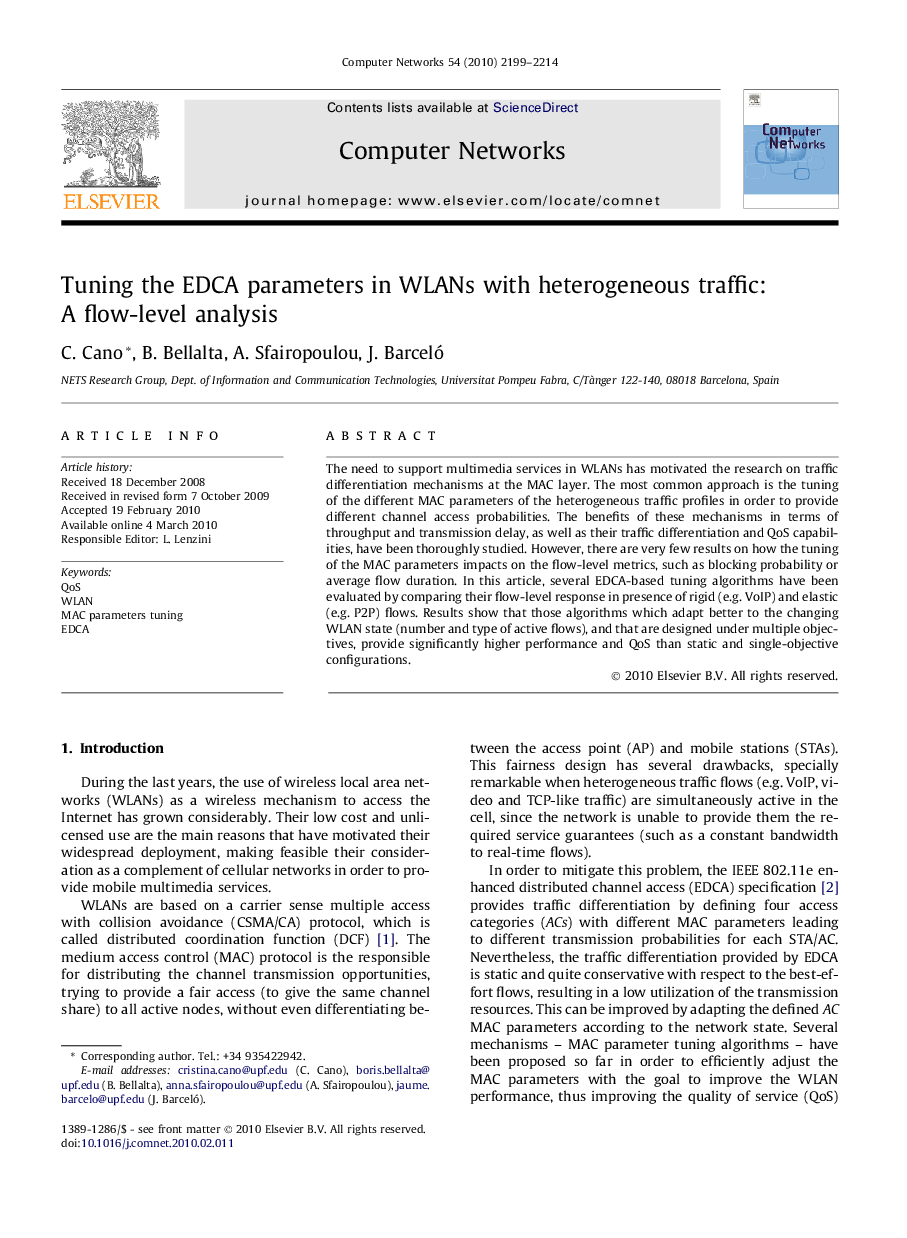| Article ID | Journal | Published Year | Pages | File Type |
|---|---|---|---|---|
| 452231 | Computer Networks | 2010 | 16 Pages |
The need to support multimedia services in WLANs has motivated the research on traffic differentiation mechanisms at the MAC layer. The most common approach is the tuning of the different MAC parameters of the heterogeneous traffic profiles in order to provide different channel access probabilities. The benefits of these mechanisms in terms of throughput and transmission delay, as well as their traffic differentiation and QoS capabilities, have been thoroughly studied. However, there are very few results on how the tuning of the MAC parameters impacts on the flow-level metrics, such as blocking probability or average flow duration. In this article, several EDCA-based tuning algorithms have been evaluated by comparing their flow-level response in presence of rigid (e.g. VoIP) and elastic (e.g. P2P) flows. Results show that those algorithms which adapt better to the changing WLAN state (number and type of active flows), and that are designed under multiple objectives, provide significantly higher performance and QoS than static and single-objective configurations.
